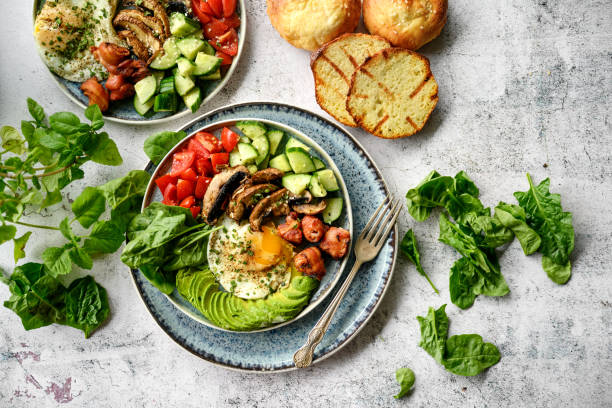Calorie counting is a popular technique among both dieters and fitness fanatics. But what precisely is a calorie, and how does it figure into a meal? In this blog article, we’ll look at calories and how to calculate them in a meal. You can better control your nutrition and achieve your fitness objectives if you grasp this information.
What is Calorie Counting?
Calorie counting is a method of tracking your food and calorie consumption. When you calorie count, you strive to consume low-calorie items in order to lose weight or maintain your present weight. Calorie counting may be done in a variety of methods, but the most common is to multiply the serving size by the caloric density to get the amount of calories in a meal. A food’s caloric density is the amount of energy it contains per unit weight. Sugary snacks, processed meals, and sugary beverages are examples of high-calorie-dense foods. Vegetables, healthy grains, and lean protein sources are examples of low-calorie-dense foods.
There are numerous websites that provide simple calculators to assist you to find out how many calories are in various meals. The website www.nutritiondata.com is one example. This website includes a simple calculation that considers both serving size and calorie density for over 2,000 different meals.
When it comes to calorie tracking, it’s critical to remember to listen to your body. If you feel full after eating just a modest quantity of food, you probably ate too many calories and did not meet your daily calorie target.
How to Calculate Calories in a Meal

Calories in a meal depending on the food items and their caloric values. The number of calories in a food item is determined by its weight and its caloric value. The more physical activity you do during the day, the more calories your body will burn. For example, if you weigh 150 pounds and have regular exercise, your daily calorie intake should be about 2,000. If you weigh 250 pounds, your daily calorie intake would be about 2,500.
What are the Different Types of Meals?
There are several different types of meals, and calculating the calories in them can be a little confusing. Here is a breakdown of the different types of meals:
1) A snack: This is anything that you eat between meals that isn’t a full meal. Examples include an apple, candy bar, cookie, or cracker.
2) A full meal: This is anything that you eat as a complete meal, including any beverages and side dishes.
3) An appetizer: This is anything that you eat before your main meal. It can be something small like a mini-meal or appetizer plate.
4) A dessert: This is anything that you eat after your main meal. It can be something small like a piece of cake or pie, or it can be something bigger like an ice cream sundae or brownie sundae.
What are the Macronutrient Ratios for a Meal?

To calculate the total number of calories in a meal, multiply the number of grams of each macronutrient by the number of calories per gram.
For example, if you are eating a steak and accompanying vegetables, you would calculate the following:
- Grams: 160
- Calories/gram: 27
- Macronutrients: 16% protein, 41% carbs, and 27% fat
Therefore, the total number of calories in this meal would be 3404.
How to Make Healthy Dinners Without Calorie Counting
There is no need to a calorie count when trying to make healthy dinners. Here are some tips for creating meals without worrying about the number of calories.
Plan Ahead: Make a list of what you will be cooking and figure out the approximate caloric value of each ingredient. This will help you avoid overeating and keep your dinners healthy and low in calories.
Choose Low-Calorie Options: Consider substituting high-fat or high-calorie foods with lower-calorie alternatives. For example, instead of using cheese, try using whipped cream or sour cream as an option. Likewise, instead of frying an egg, cook it over easy or sunny side up without adding any extra salt or fat.
Select Vegetables: Load up on vegetables instead of opting for processed foods that often contain a lot of added sugar and fat. This will help you stay within your calorie limit while still enjoying a meal.
Avoid Alcohol: Drinking alcohol can add up quickly in terms of calories and should be avoided when possible when trying to eat healthily. Instead, opt for drinks like water or unsweetened tea.
